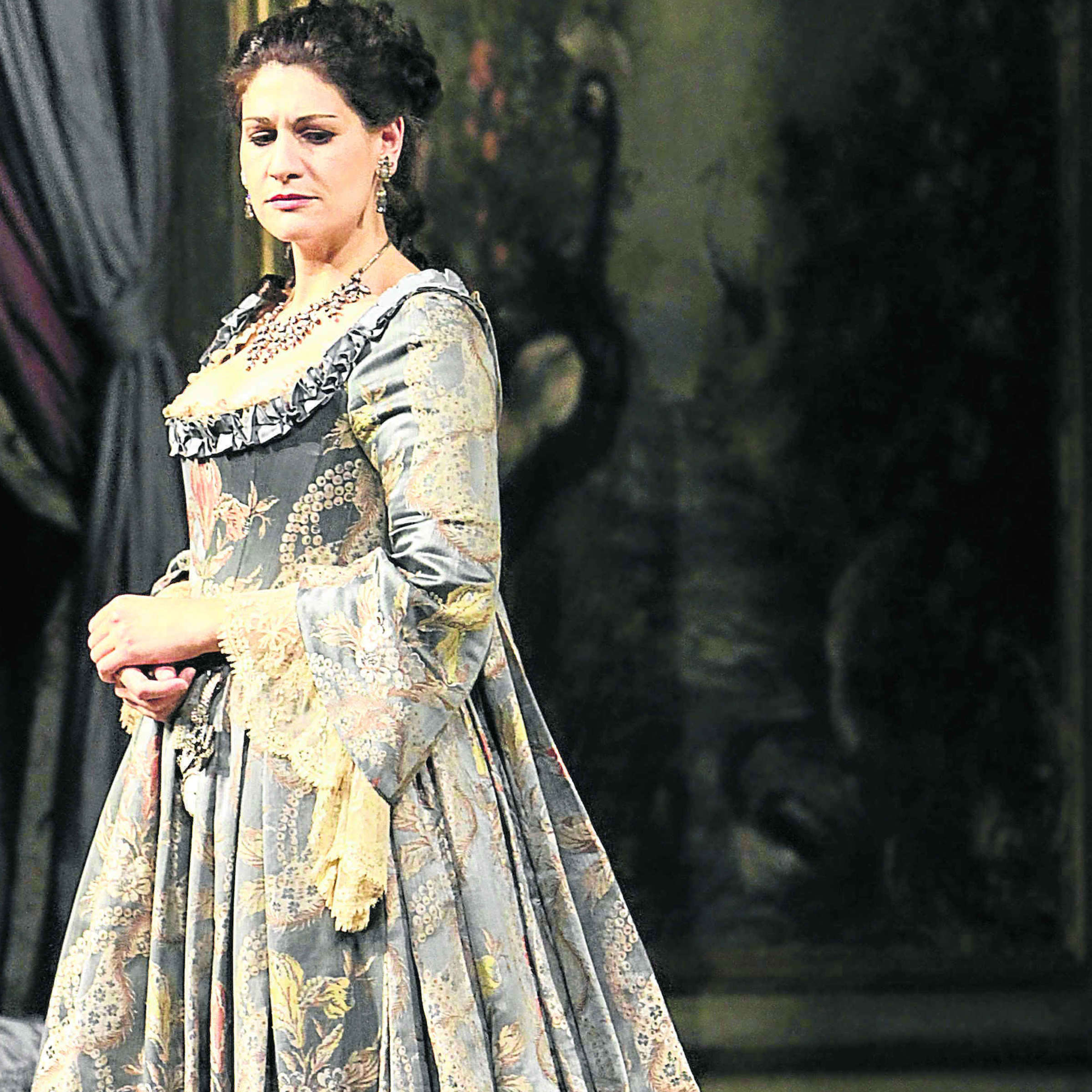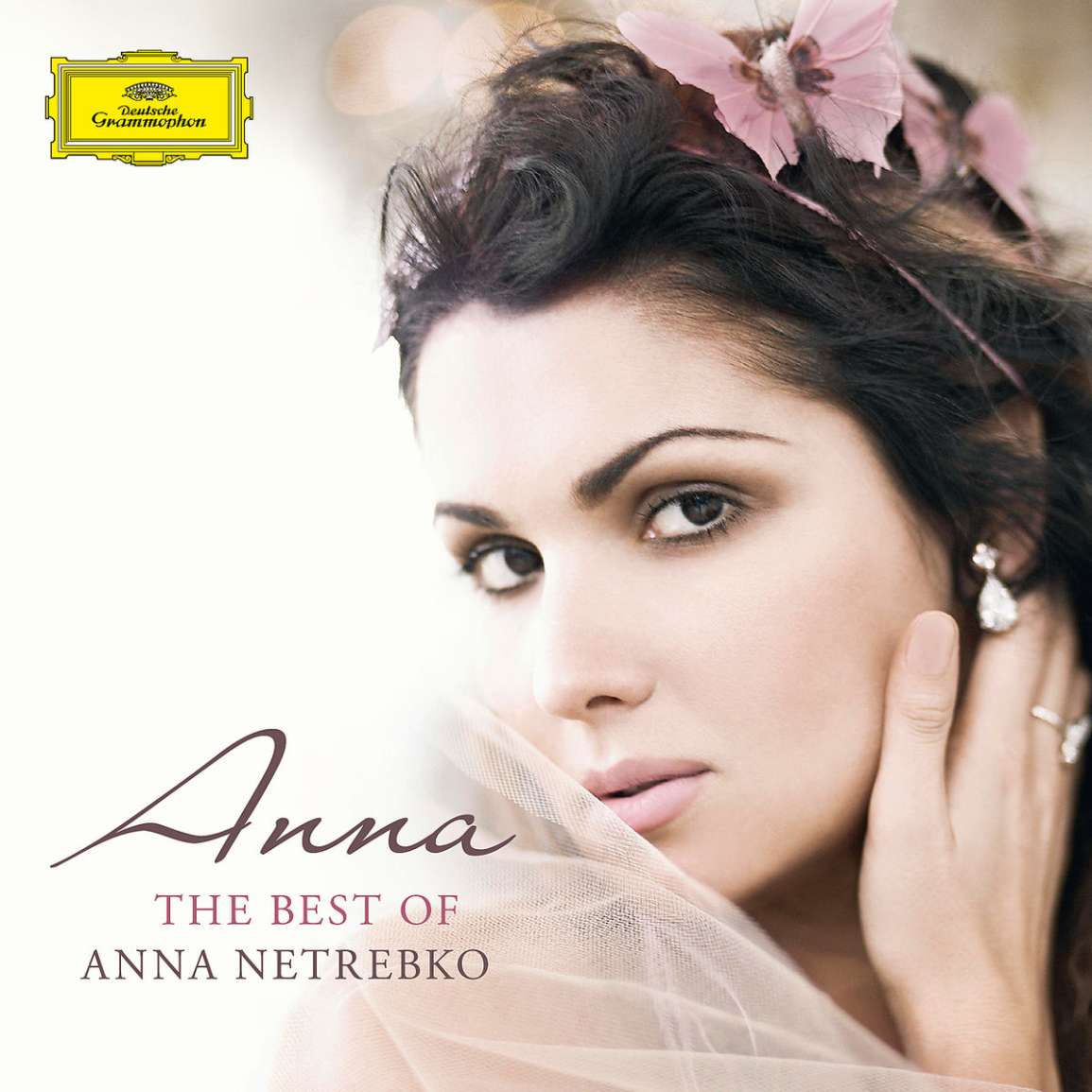
Deutsch-Chinesische Enzyklopädie, 德汉百科
 Musik
Musik
















安东·布鲁克纳(德语:Anton Bruckner,德语发音:[ˈantɔn ˈbʀʊknɐ];1824年9月4日-1896年10月11日),奥地利作曲家、管风琴演奏家、音乐教育家。他以创作交响曲、弥撒曲与经文歌而著称,亦有创作出优秀的室内乐作品如弦乐四重奏和弦乐五重奏。其交响曲因其丰富的音响结构、多重的复调特性和宏大的结构[1]而被认为是德奥派浪漫主义最后阶段的代表人物。布鲁克纳的作品以其对不和谐音的使用、突然的转调以及延绵不断的和声而对当代音乐激进主义产生了广博的影响。
Joseph Anton Bruckner (* 4. September 1824 in Ansfelden, Oberösterreich; † 11. Oktober 1896 in Wien) war ein österreichischer Komponist der Romantik sowie Organist und Musikpädagoge. Erst spät im Leben von den Zeitgenossen als Komponist gewürdigt, gehörte er doch zu den wichtigsten und innovativsten Tonschöpfern seiner Zeit und hat durch seine Werke bis weit ins 20. Jahrhundert hinein großen Einfluss auf die Musikgeschichte ausgeübt. Seine bedeutendsten und wohl auch bekanntesten Kompositionen sind seine groß angelegten Sinfonien. Auch die Kirchenmusik hat er um wichtige Werke bereichert − unter anderem drei große Messen und das Te Deum. Als Organist wurde er vor allem für seine Improvisationen bewundert.
布鲁克纳的第四交响曲:
1881年2月20日周日,对于56岁的布鲁克纳来说是难忘的一天。他创作的最长一部交响曲第四交响曲在维也纳首演,获得了巨大的成功,终于消除了七年前他的另一部作品第三交响曲首演失利的沮丧,第四交响曲让他几乎跻身于“交响乐圣”的非凡名望地位。
显然易见人们热爱这部作品,音乐充满叙事性与戏剧性,一开篇就带有奥地利民族风格,使维也纳认为他们心中的舒伯特又复活了。现实中,他们又真切完整感受到这一切。布鲁克纳七年奋斗,就是为了能超越舒伯特这位前人创造交响乐的型式,他广泛吸纳瓦格纳音乐的元素。
乐曲开始就以一整篇幅的号角喻示着城市清晨的唤醒,鼓舞我们精神勃发的面对不可想像的现实。第二主题随即喷薄而出,引领我们直面纷繁的现实。第一乐章有点 类似贝多芬田园交响曲,如像在到达乡村大自然景色的欢乐中。这里运用了布鲁克纳思索中的音阶,73小节极富张力充满色彩的乐句。
(Quelle: http://yp.pcauto.com.cn/qcyx/yjcp/0805/657826.html)

安东·弗雷德里克·威廉·冯·韦伯恩(德语:Anton Friedrich Wilhelm von Webern,1883年12月3日-1945年9月15日),又译韦伯恩,奥地利作曲家,第二维也纳乐派代表人物之一。
韦伯恩1883年出生于维也纳,1902年入维也纳大学学习音乐学,1904年-1908年师从于勋伯格,与勋伯格、贝尔格组成新维也纳乐派(或称第二维也纳乐派),1920年起定居维也纳,从事指挥和教学。纳粹占领奥地利期间,因受纳粹迫害(希特勒明令禁止演出第二维也纳乐派的音乐),不得不过隐居生活。1945年前往萨尔茨堡看望女儿、女婿,在宵禁、灯火管制时于户外吸烟,被一美国士兵误杀(该士兵在战后因懊悔而酗酒,于1955年身亡)。
创作上分三个阶段:
- 第一阶段,晚期浪漫主义音乐:创作风格受古斯塔夫·马勒等晚期浪漫主义作曲家的影响,主要作品Op.1帕萨卡里亚舞曲。
- 第二阶段,自由无调性音乐:在其老师勋伯格的影响下创作了大量无调式音乐,作品的规模越来越小,在配器上简洁的不能再简洁,同时韦伯恩的创作开始使用音色序列法,即音色组合在不停地变换中,一个音色组合一般只持续1、2秒。主要作品Op.21交响曲。
- 第三阶段,十二音音乐:这一时期韦伯恩除使用十二音作曲技法创作外,还进行了点描主义音乐的尝试,Op.27钢琴变奏曲就是这一时期的代表作。
在第二次世界大战后,韦伯恩的影响越来越大,并且超过了勋伯格和贝尔格。他曾醉心于神秘主义的数字冥想和形式主义的音响排列探索;他的许多尝试被后来的作曲家进一步发展,音色序列法被法国作曲家兼指挥家皮埃尔·布列兹发展为序列主义音乐;点描主义音乐首次将无声视为一种音响与有声取得相同的地位,极大的启发了约翰·凯奇、卡尔海因茨·施托克豪森等作曲家。
安东宁·利奥波德·德沃夏克(捷克语:Antonín Leopold Dvořák,1841年9月8日-1904年5月1日)生于布拉格(当时属于奥匈帝国,现属于捷克)附近的内拉霍奇夫斯镇伏尔塔瓦河旁的磨房内,卒于布拉格,是捷克民族乐派作曲家。
追随着民族主义者斯美塔那,德沃夏克经常在他的作品中使用摩拉维亚和他的故乡波希米亚(当时属于奥匈帝国,现属捷克)的民谣音乐的风格。德沃夏克自己的风格经常被描述为“吸收了民歌的影响并找到有效的方式利用它们,用交响乐的传统最完满的再现了一个民族的特色”。[1]其代表作有第九交响曲《新世界交响曲》、《B小调大提琴协奏曲 (德沃夏克)》、《斯拉夫舞曲》、歌剧《露莎卡》。他被认为“可能是他那个时代最多面手的作曲家”。
Antonín Leopold Dvořák  anhören?/i [ˈantɔɲiːn ˈlɛɔpɔlt ˈdvɔr̝aːk], (* 8. September 1841 in Nelahozeves; † 1. Mai 1904 in Prag) war ein böhmischer Komponist der Romantik. Sein vielseitiges Werk umfasst neun Sinfonien und zahlreiche weitere Orchesterwerke, Opern, Vokalmusik, Kammermusik sowie Klavier- und Orgelstücke. Dvořák ist der weltweit meistgespielte tschechische Komponist.
anhören?/i [ˈantɔɲiːn ˈlɛɔpɔlt ˈdvɔr̝aːk], (* 8. September 1841 in Nelahozeves; † 1. Mai 1904 in Prag) war ein böhmischer Komponist der Romantik. Sein vielseitiges Werk umfasst neun Sinfonien und zahlreiche weitere Orchesterwerke, Opern, Vokalmusik, Kammermusik sowie Klavier- und Orgelstücke. Dvořák ist der weltweit meistgespielte tschechische Komponist.
アントニーン・レオポルト・ドヴォルザーク(チェコ語:Antonín Leopold Dvořák [ˈantɔɲiːn ˈlɛɔpɔlt ˈdvɔr̝aːk]  発音[ヘルプ/ファイル]、1841年9月8日 - 1904年5月1日)は後期ロマン派におけるチェコの作曲家。チェコ国民楽派を代表する作曲家である。チェコ語の発音により近い「ドヴォルジャーク」[1]「ドヴォジャーク」[2]という表記も用いられている(表記についてはドヴォジャークを参照)。
発音[ヘルプ/ファイル]、1841年9月8日 - 1904年5月1日)は後期ロマン派におけるチェコの作曲家。チェコ国民楽派を代表する作曲家である。チェコ語の発音により近い「ドヴォルジャーク」[1]「ドヴォジャーク」[2]という表記も用いられている(表記についてはドヴォジャークを参照)。
ブラームスに才能を見いだされ、『スラヴ舞曲集』で一躍人気作曲家となった。スメタナとともにボヘミア楽派と呼ばれる。その後、アメリカに渡り、音楽院院長として音楽教育に貢献する傍ら、ネイティブ・アメリカンの音楽や黒人霊歌を吸収し、自身の作品に反映させている。代表作に、弦楽セレナード、管楽セレナード、ピアノ五重奏曲第2番、交響曲第7番、交響曲第8番、交響曲第9番『新世界より』、スラヴ舞曲集、この分野の代表作でもあるチェロ協奏曲、『アメリカ』の愛称で知られる弦楽四重奏曲第12番などがある。
Antonín Leopold Dvořák (/d(ə)ˈvɔːrʒɑːk, -ʒæk/ d(ə-)VOR-zha(h)k; Czech: [ˈantoɲiːn ˈlɛopold ˈdvor̝aːk] ( listen); 8 September 1841 – 1 May 1904) was a Czech composer, one of the first to achieve worldwide recognition. Following the Romantic-era nationalist example of his predecessor Bedřich Smetana, Dvořák frequently employed rhythms and other aspects of the folk music of Moravia and his native Bohemia. Dvořák's own style has been described as "the fullest recreation of a national idiom with that of the symphonic tradition, absorbing folk influences and finding effective ways of using them".[1]
listen); 8 September 1841 – 1 May 1904) was a Czech composer, one of the first to achieve worldwide recognition. Following the Romantic-era nationalist example of his predecessor Bedřich Smetana, Dvořák frequently employed rhythms and other aspects of the folk music of Moravia and his native Bohemia. Dvořák's own style has been described as "the fullest recreation of a national idiom with that of the symphonic tradition, absorbing folk influences and finding effective ways of using them".[1]
Dvořák displayed his musical gifts at an early age, being an apt violin student from age six. The first public performances of his works were in Prague in 1872 and, with special success, in 1873, when he was 31 years old. Seeking recognition beyond the Prague area, he submitted a score of his First Symphony to a prize competition in Germany, but did not win, and the unreturned manuscript was lost until rediscovered many decades later. In 1874 he made a submission to the Austrian State Prize for Composition, including scores of two further symphonies and other works. Although Dvořák was not aware of it, Johannes Brahms was the leading member of the jury and was highly impressed. The prize was awarded to Dvořák in 1874[a] and again in 1876 and in 1877, when Brahms and the prominent critic Eduard Hanslick, also a member of the jury, made themselves known to him. Brahms recommended Dvořák to his publisher, Simrock, who soon afterward commissioned what became the Slavonic Dances, Op. 46. These were highly praised by the Berlin music critic Louis Ehlert in 1878, the sheet music (of the original piano 4-hands version) had excellent sales, and Dvořák's international reputation was launched at last.
Dvořák's first piece of a religious nature, his setting of Stabat Mater, was premiered in Prague in 1880. It was very successfully performed in London in 1883, leading to many other performances in the United Kingdom and United States.[2] In his career, Dvořák made nine invited visits to England, often conducting performances of his own works. His Seventh Symphony was written for London. Visiting Russia in March 1890, he conducted concerts of his own music in Moscow and Saint Petersburg.[3] In 1891 Dvořák was appointed as a professor at the Prague Conservatory. In 1890–91, he wrote his Dumky Trio, one of his most successful chamber music pieces.
In 1892, Dvořák moved to the United States and became the director of the National Conservatory of Music of America in New York City. The President of the National Conservatory of Music in America, Jeannette Thurber, offered Dvořák an annual salary of $15,000– twenty-five times what he was paid at the Prague Conservatory.[4] While in the United States, Dvořák wrote his two most successful orchestral works: the Symphony From the New World, which spread his reputation worldwide,[5] and his Cello Concerto, one of the most highly regarded of all cello concerti. In the summer of 1893, Dvořák moved from New York City to Spillville, Iowa, following the advice of his secretary, J.J. Kovarík. Dvořák had originally planned to come back to Bohemia, but Spillville was made up of mostly Czech immigrants, and thus felt less homesick; Dvořák referred to it as his "summer Vysoka."[6] This is where he wrote his most famous piece of chamber music, his String Quartet in F major, Op. 96, which was later nicknamed the American Quartet. Shortly after his time in Iowa, Dvorák extended his contract at the National Conservatory for another two years. However, the economic crisis of April 1893 resulted in Thurber's husband's loss of income, and directly influenced the National Conservatory's funding. But shortfalls in payment of his salary, along with increasing recognition in Europe and an onset of homesickness, led him to leave the United States and return to Bohemia in 1895.
All of Dvořák's nine operas, except his first, have librettos in Czech and were intended to convey the Czech national spirit, as were some of his choral works. By far the most successful of the operas is Rusalka. Among his smaller works, the seventh Humoresque and the song "Songs My Mother Taught Me" are also widely performed and recorded. He has been described as "arguably the most versatile... composer of his time".[7]
The Dvořák Prague International Music Festival is a major series of concerts held annually to celebrate Dvořák's life and works.[8]
Antonín Dvořák (prononcé en tchèque : /ˈantɔɲiːn ˈdvɔr̝aːk/ Écouter), né le 8 septembre 1841 à Nelahozeves (royaume de Bohême) et mort le 1er mai 1904 à Prague, est un compositeur bohémien. Il est notamment l'auteur de la Symphonie du Nouveau Monde.
Antonín Leopold Dvořák (ascolta[?·info]; Nelahozeves, 8 settembre 1841 – Praga, 1º maggio 1904) è stato un compositore ceco.
Antonín Leopold Dvořák (/d(ə)ˈvɔːrʒɑːk, -ʒæk/ [ˈantoɲiːn ˈlɛopolt ˈdvor̝aːk] Nelahozeves, 8 de septiembre de 1841-Praga, 1 de mayo de 1904) fue un compositor posromántico natural de Bohemia —territorio entonces perteneciente al Imperio austríaco—. Es considerado el principal representante del nacionalismo checo en la música. Está considerado como uno de los grandes compositores de la segunda mitad del siglo XIX. Sin perder una amplia proyección internacional, supo extraer las esencias de la música de su tierra natal. Su obra más célebre es la Sinfonía del Nuevo Mundo.
Антони́н Двόржак (чеш. Antonín Leopold Dvořák (инф.); 8 сентября 1841 года — 1 мая 1904 года) — чешский композитор, представитель романтизма. В его произведениях широко используются мотивы и элементы народной музыки Моравии и Богемии. Вместе с Б. Сметаной является создателем чешской национальной музыкальной школы. К числу наиболее известных работ Дворжака относятся Симфония № 9 «Из Нового света» (написанная в США), опера «Русалка», Концерт для виолончели с оркестром, «Американский» струнный квартет, Реквием, Stabat Mater и «Славянские танцы».


